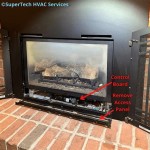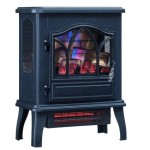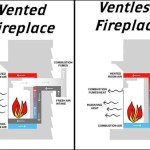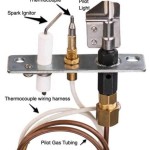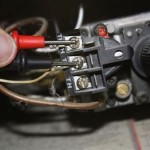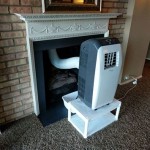Converting a Wood Fireplace to a Gas Fireplace: A Comprehensive Guide
The decision to convert a wood-burning fireplace to a gas-fueled alternative is a common one among homeowners seeking increased convenience, efficiency, and reduced maintenance. While a wood-burning fireplace offers a traditional ambiance and the distinct aroma of burning wood, it also requires significant effort in sourcing, storing, and tending to the fuel. Furthermore, wood fireplaces often present challenges related to air quality and creosote buildup. A gas fireplace, on the other hand, provides instant warmth at the flick of a switch, burns cleaner, and eliminates the need for manual labor. This conversion process, however, is not a simple task and involves careful planning, adherence to safety regulations, and potentially professional assistance.
This article aims to provide a comprehensive guide to understanding the process of converting a wood fireplace to a gas fireplace, outlining considerations, steps involved, and potential benefits and drawbacks associated with this home improvement project. This guide will cover essential elements, from selecting the appropriate gas insert or log set to ensuring proper ventilation and safety compliance.
Key Considerations Before Converting
Prior to initiating the conversion process, several critical factors must be carefully evaluated. These factors will influence the type of gas fireplace system that is suitable for the existing firebox and determine the overall feasibility of the project. Ignoring these early considerations can lead to installation problems, safety hazards, or unsatisfactory performance.
The first step is to thoroughly inspect the existing fireplace structure. This includes the firebox, the chimney, and the surrounding hearth area. Look for any signs of structural damage, such as cracks in the brickwork, crumbling mortar, or water damage. Any existing damage needs to be addressed before proceeding with the conversion. A professional inspection is highly recommended to identify hidden issues and ensure the structural integrity of the fireplace.
Next, measure the dimensions of the firebox accurately. Height, width, and depth are all crucial measurements for selecting an appropriately sized gas insert or log set. The selected unit must fit comfortably within the firebox while maintaining adequate clearance for proper ventilation and safe operation. Most manufacturers provide detailed sizing guidelines for their products, and these should be carefully reviewed before making a purchase.
The type of chimney is another critical factor. Is it a masonry chimney or a prefabricated metal chimney? The type of chimney will dictate the venting requirements for the gas fireplace. A masonry chimney may require a liner to be installed to ensure proper drafting and prevent the corrosive effects of flue gases. A prefabricated chimney may already be suitable for gas venting, but it's essential to verify compatibility with the manufacturer's specifications. Local building codes often specify which types of venting are permissible and what clearances are required.
Finally, homeowners should consider their preferred aesthetic. Gas fireplaces come in a variety of styles, from traditional log sets to modern linear designs. The visual appeal of the gas fireplace should complement the existing décor of the room. Factors to consider include the flame pattern, the media (e.g., ceramic logs, glass beads, stones), and the overall design of the unit.
Steps Involved in the Conversion Process
The conversion of a wood fireplace to a gas fireplace involves several key steps, each requiring attention to detail and adherence to safety protocols. While some experienced DIY enthusiasts may attempt this project, it is generally recommended to hire a qualified professional, such as a licensed gas fitter or fireplace installer. This ensures that the work is performed safely and in compliance with local building codes.
The first step is to choose the right gas fireplace system. There are two primary options: gas fireplace inserts and gas log sets. Gas fireplace inserts are self-contained units that fit directly into the existing firebox. They typically offer higher heating efficiency and include features such as thermostats and remote controls. Gas log sets, on the other hand, are designed to mimic the appearance of a traditional wood fire. They are generally less expensive than inserts but may not provide the same level of heating efficiency.
Once the gas fireplace system has been selected, the next step is to prepare the existing fireplace. This involves cleaning the firebox thoroughly and removing any debris, such as ashes, soot, or creosote. The chimney should also be inspected and cleaned to ensure proper drafting. If a chimney liner is required, it should be installed at this stage.
Next, a gas line needs to be run to the fireplace. This is a critical step that must be performed by a licensed gas fitter. The gas line must be properly sized to provide adequate gas pressure to the fireplace. All connections must be leak-tested to ensure safety. Local building codes often specify the type of piping and fittings that are permitted for gas installations.
With the gas line in place, the gas fireplace insert or log set can be installed. The unit should be carefully positioned within the firebox, following the manufacturer's instructions. The gas line should be connected to the unit, and all connections should be leak-tested. The vent system should also be connected to the unit, ensuring that it is properly sealed and venting to the exterior of the home.
Finally, the gas fireplace should be tested to ensure that it is operating safely and efficiently. This involves lighting the fireplace and observing the flame pattern. The unit should be allowed to run for several hours to ensure that all components are functioning properly. A carbon monoxide detector should be installed in the room to provide added safety.
Potential Benefits and Drawbacks
Converting a wood fireplace to a gas fireplace offers several compelling benefits. The most significant advantage is the convenience of instant heat. With a gas fireplace, there is no need to gather wood, build a fire, or wait for the flames to catch. Simply flip a switch or press a button on a remote control, and the fireplace will ignite instantly.
Gas fireplaces are also significantly cleaner than wood fireplaces. They produce less smoke, soot, and creosote, which can improve indoor air quality and reduce the risk of chimney fires. Gas fireplaces also eliminate the need to store wood, which can be a messy and space-consuming task.
In terms of efficiency, gas fireplaces are generally more efficient than wood fireplaces. They convert a higher percentage of the fuel into usable heat, reducing energy waste and lowering heating costs. Some gas fireplaces also include features such as thermostats and programmable timers, which allow homeowners to precisely control the temperature and operating schedule of the unit.
However, there are also some potential drawbacks to consider. The initial cost of converting a wood fireplace to a gas fireplace can be significant. This includes the cost of the gas fireplace insert or log set, the cost of running a gas line, and the cost of installation. Ongoing operating costs, such as the cost of natural gas or propane, should also be factored into the equation.
Another potential drawback is the loss of the traditional ambiance of a wood fire. While gas fireplaces can mimic the appearance of a wood fire, they do not produce the same crackling sound or the distinct aroma of burning wood. Some homeowners may miss these sensory elements of a wood fireplace.
Finally, gas fireplaces require a source of fuel, such as natural gas or propane. If the gas supply is interrupted, the fireplace will not function. This can be a concern during power outages or natural disasters.
Throughout the conversion process, strict adherence to safety regulations is paramount. Working with gas lines poses significant risks, and any errors can lead to gas leaks, explosions, or carbon monoxide poisoning. Therefore, it is crucial to hire a qualified and licensed gas fitter to handle the gas line installation. Additionally, ensure that all connections are properly tested for leaks and that a carbon monoxide detector is installed in the vicinity of the fireplace.
Local building codes and permit requirements vary, so it is essential to consult with your local authorities before starting the conversion project. Obtaining the necessary permits ensures that the work is performed in compliance with regulations and that the fireplace is safe to operate. Furthermore, it is advisable to inform your insurance company about the conversion, as this may affect your homeowner's insurance policy.
Selecting the appropriate gas fireplace system requires careful consideration of various factors, including the size of the firebox, the type of chimney, and the desired aesthetic. Gas fireplace inserts are typically more efficient and offer greater control over heating, while gas log sets provide a more traditional appearance. Thorough research and comparison of different models are essential to make an informed decision.
Maintaining a gas fireplace involves regular cleaning and inspection to ensure optimal performance and safety. The glass door should be cleaned periodically to remove any soot or debris. The burner should be inspected for any clogs or obstructions. The vent system should be checked for any blockages or leaks. Regular maintenance can help prevent problems and extend the lifespan of the gas fireplace.
Ultimately, the decision to convert a wood fireplace to a gas fireplace is a personal one that should be based on individual needs, preferences, and budget. By carefully considering the factors outlined in this article, homeowners can make an informed decision and ensure a safe and successful conversion.
Converting A Wood Burning Fireplace Into Gas Heat Glo
Can I Convert My Wood Burning Fireplace To Gas Woodlanddirect Com

Convert From Wood To Gas With A Insert The Kernel Burner

Wood To Gas Fireplace Conversion In Wisconsin Free Quote Badgerland Waesha

Wood Fireplaces Gas Conversion That Counts

Converting Wood Fireplace To Gas Valparaiso In Northwest Chimney

Wood Burner Conversion New Jersey Fireplaces Kjb
Can I Convert My Wood Burning Fireplace To Gas Woodlanddirect Com

What S The Cost To Convert A Wood Fireplace Gas Orange County Register

Convert Your Wood Burning Fireplace To Propane Ny
Related Posts

